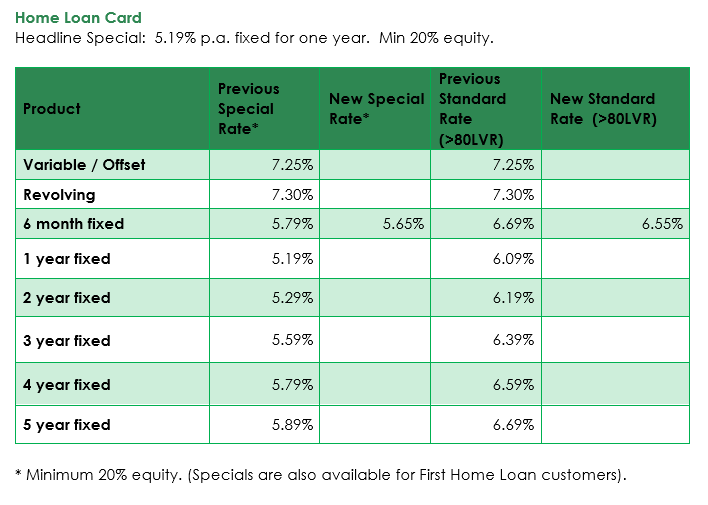Rate move follows that of ASB and TSB

Kiwibank has updated its rate offerings for fixed home loans, effective April 1.
The adjustments include a reduction in the six-month special fixed rate from 5.79% to 5.65%, a decrease in the six-month standard fixed rate from 6.69% to 6.55%, and an increase in the two-year fixed rate from 5.19% to 5.29%.
Additionally, Kiwibank has lowered its one-year fixed special rate to 5.19%, available to borrowers with at least 20% equity or deposit.

These changes reflect the bank’s response to the evolving market conditions and follow a trend seen in other major New Zealand banks adjusting their rates.
Broader banking sector rate adjustments
The banking sector has seen several rate changes recently.
ASB adjusted its rates on March 21, with the six-month rate decreasing from 5.89% to 5.79%, the four-year rate from 5.79% to 5.59%, and the five-year rate from 5.79% to 5.69%.
Further back, on March 4, TSB also revised its rates, lowering the one-year rate from 5.35% to 5.19%, the two-year from 5.29% to 4.99%, and the three-year from 5.59% to 5.39%, Opes Partners reported.
Market outlook and competitive mortgage rates
With the Reserve Bank’s recent cuts, New Zealand’s housing market is anticipated to experience a rebound in 2025, propelled by competitive mortgage rates.
Major banks have varied in their speed to adjust mortgage rates following shifts in the OCR, with Kiwibank being notably slower in adjusting its floating rates for existing customers.
A Kiwibank spokesperson commented on the delay, stating, “This includes the time to send customers the required disclosures. Importantly, over the past five years, Kiwibank has consistently had one of the lowest variable rates compared to the larger banks.”
Kiwibank recently reported a 12% drop in its recent half-year figures due to lower net interest margins and rising operational costs amidst economic challenges and significant investments in transformation. Despite these issues, the bank demonstrated resilience with strong performance in lending and deposit growth.



